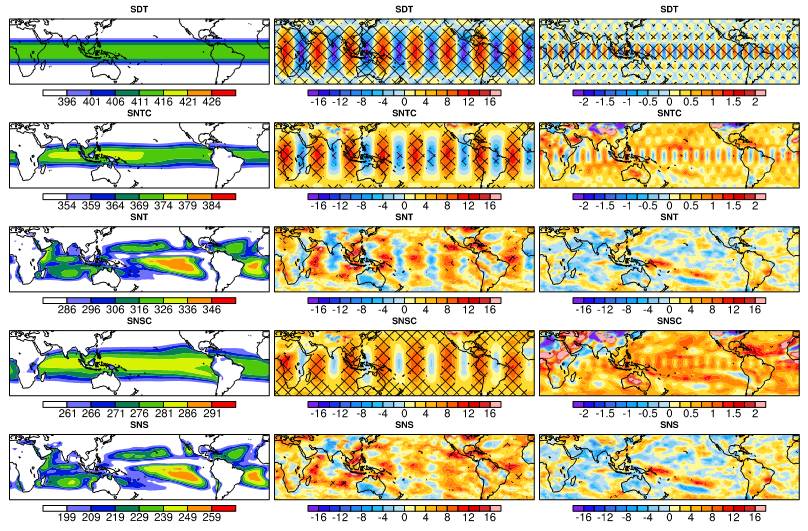
The incident solar radiation at the top of atmosphere (TOA) is the most important forcing of the climate system of the Earth. Because of the uncertainty in measurements of solar constant, climate models may use slightly different values of this constant, but they all employ the same well-known algorithm [Green, 1985] to calculate the solar zenith angle that determines the temporal and spatial distributions of insolation. Theoretically, when averaged over a day, insolation is expected to be zonally uniform if the change of solar declination angle within a day is neglected.
However, ZHOU Linjiong, ZHANG Minghua, BAO Qing and LIU Yimin from the Institute of Atmospheric Physics found that this is not the case in many climate models that participated in the Coupled Model Intercomparison Project phase 5 (CMIP5). They found that the incident radiation exhibited zonal oscillations, with up to 30 W/m2 of spurious variations. They showed that this feature is caused by temporal sampling errors in the calculation of the solar zenith angle. The sampling error can cause zonal oscillations of surface clear-sky net shortwave radiation of about 3 W/m2 when an hourly radiation time step is used and 24 W/m2 when a 3 h radiation time step is used. This sampling bias can be removed by taking the average of the cosine solar zenith angle between the two time steps.

Fig. 1 Annual mean incident solar radiation at the top of atmosphere from eight climate models in CMIP5. The color scale has been adjusted to highlight the zonal variation in the tropics. Units: W/m2. (Image by IAP)

Fig. 2. Annual mean downward shortwave radiation at TOA (SDT), clear-sky net shortwave radiation at TOA (SNTC), total-sky net shortwave radiation at TOA (SNT), clear-sky net shortwave radiation at surface (SNSC), total-sky net shortwave radiation at surface (SNS) for (left column) 1 h radiation time step based on the revised algorithm, (middle column) the original algorithm minus the revised algorithm for 3 h radiation time step, (right column) the original algorithm minus the revised algorithm for 1 h radiation time step. Hatched area indicates statistically significant regions at the 95% confidence level. Units: W/m2. (Image by IAP)
They then applied a revised algorithm in the CESM and found it could correct the bias from both spatial and temporal sampling errors and guarantee energy conservation. Moreover, the revised algorithm is easy to implement. The results were published in Geophysical Research Letters.
Reference:
Zhou, L., M. Zhang, Q. Bao, and Y. Liu (2015), On the incident solar radiation in CMIP5 models, Geophys. Res. Lett., 42(6), 1930-1935, doi: 10.1002/2015gl063239.
Contact:
ZHANG Minghua
E-mail: Minghua.zhang@stonybrook.edu

86-10-68597521 (day)
86-10-68597289 (night)

86-10-68511095 (day)
86-10-68512458 (night)

cas_en@cas.cn

52 Sanlihe Rd., Xicheng District,
Beijing, China (100864)

